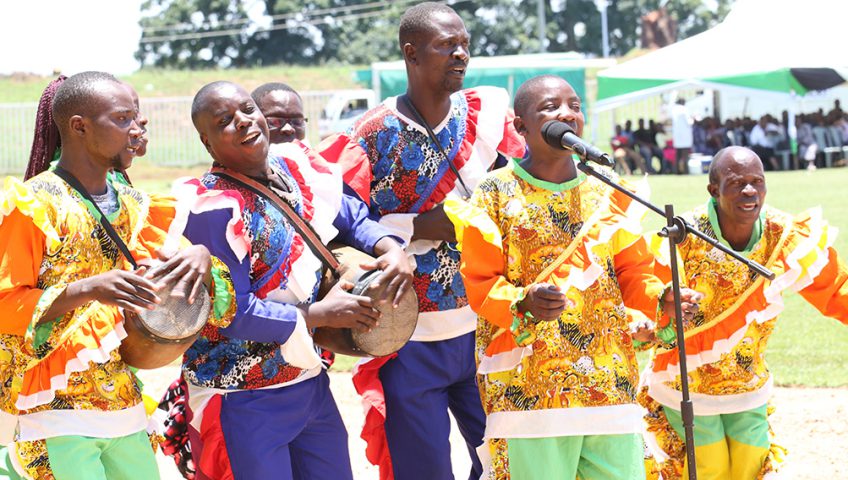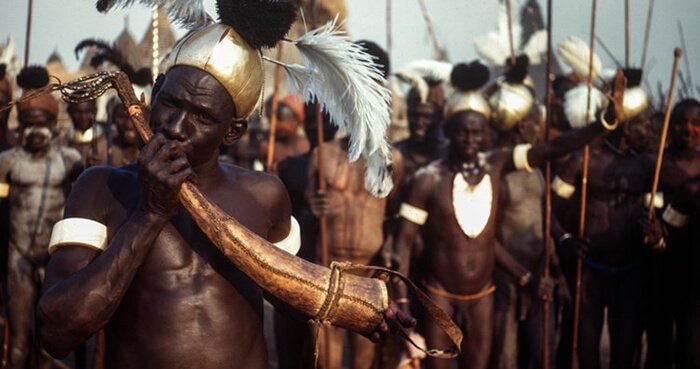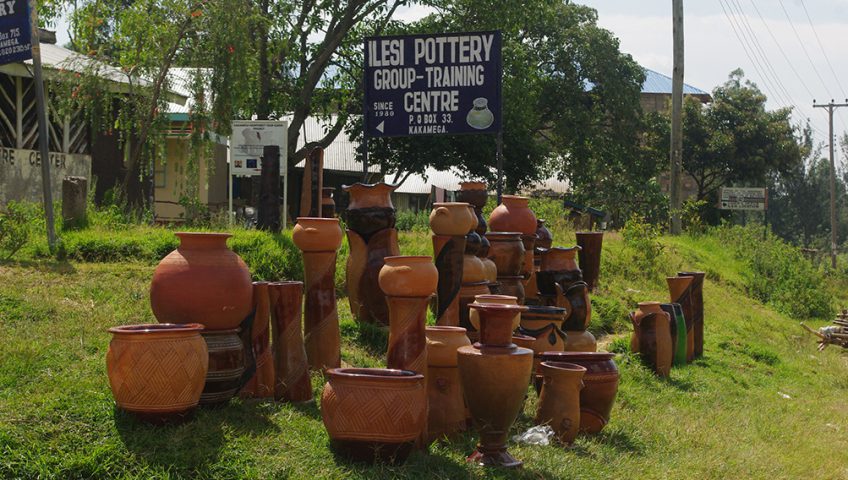

Isukuti Dance
The Isukuti dance is a traditional celebratory performance practiced mainly among the Isukha and Idakho communities of Kakamega County.
It takes the form of a fast-paced, energetic and passionate dance accompanied by drumming and singing. An integral tool for cultural transmission and harmonious co-existence between families and communities, it permeates most occasions and stages in life including childbirths, initiations, weddings, funerals, commemorations, inaugurations, religious festivities, sporting events and other public congregations. The dance derives its name from the drums used in the performance, played in sets of three – a Big (Isikuti isatsa -male), Medium (Omutibo -female) and a small drum son) – and normally accompanied by a bull horn and assorted metal rattles. A soloist leads the dance, singing thematic texts in tandem with the rhythm of the drumbeats and the steps of the dancers, arranged in separate rows for men and women. Transmission of Isukuti dance is presently weakening and the frequency of performance is diminishing. Many bearers are elderly and lack successors to whom they can pass on their knowledge. Lack of funds and the necessary materials to make the instruments and costumes also present an obstacle. Finally, many composers prefer to work in more commercial genres, and audiences frequently substitute contemporary entertainment for traditional Isukuti dances.
In 2014, Isikuti Dance was inscribed by UNESCO as an Intangible Cultural Heritage in Need of Urgent Safeguarding.









